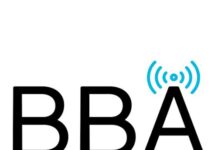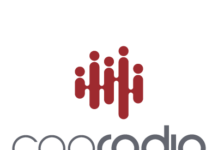There were two studies published this past week that you should be discussing with every key media decision-maker you meet. The first is “Reaching Consumers During the Purchase Process.” The agency behind this study, the Starcom MediaVest Group, has been named Agency of the Year numerous times by various industry trade publications.
In fact, MediaVest had previously been named media agency of the decade, and SMG’s SVP Director of Research, Helen Katz, is extremely well-respected throughout the ad industry.
The Starcom MediaVest Group doesn’t attach their logo to any study unless they stand firmly behind its methodology and results. They did both with this study.
When reviewing the results of any study one must “consider the source,” and the Starcom MediaVest Group is one prestigious source, so we’re suggesting you take a few minutes to reflect upon the magnitude and implications of the following quotes (in italics) and determine to whom they can be forwarded.
“In an increasingly digital world, audio and out-of-home advertising still dominate in terms of influencing consumer purchase habits across different stages, categories and targets.” —Helen Katz, Senior VP/Research Director at Publicis Media
Could any of us have said it better?
The one word that stands out is “dominate.” Ms. Katz didn’t say audio is “competitive” or is “as effective as” other media, in terms of influencing consumer purchasing habits, she used the word “dominate.” This is big.
Can it get better? It does.
In the “Implications for Marketer’s and Media Companies” recap section of the study, Starcom MediaVest Group writes:
The importance of consumer engagement with audio and out-of-home media prior to and during the purchase journey is extremely clear. There is a strong relationship between consumption of these media and consumer consideration, decision-making, and purchase, across all categories.
Advertisers are always looking for “safety,” the assurance that they are investing their marketing funds wisely. This is pretty good support to confirm that radio is a “safe” marketing investment.
And it gets even better.
As far as the type of audio is concerned, AM/FM enjoys the highest correlation for the categories assessed, and for both Millennials and Adults 18+. With the younger group, Internet-streamed audio has a weaker relationship than the other two audio types reported (AM/FM and satellite).
This highlights not only the strong correlation between being exposed to radio and “purchasing,” but that AM/FM radio out-performs the satellite radio and streaming audio options. A nice quote to have in our back pockets or to e-blast to our clients who might be a bit too infatuated with alternative audio options.
And auto dealers, pay attention to this:
As we might expect in the auto category where the purchase decision process is more extended, the correlations with media exposure for the half-hour prior are all slightly lower than the average. Yet audio and out-of-home enjoy the strongest correlations for purchase consideration and decisions. Media exposure prior to the actual automotive purchase favors out-of-home, with audio and search close behind. Looking at the relationship to purchase activity in this category by audio type, AM/FM is strongest overall, and in particular during the critical consideration stage.
The key takeaway here in radio’s largest ad category is, as we’ve been saying, that radio delivers messaging within a key window of opportunity and dramatically impacts awareness, consideration, and purchasing.
We could not have said it any better than the Starcom MediaVest Group.
The second study is titled, “Magazines Show Greatest ROAS.”
We read this article and noted that magazines had a ROAS (return-on-ad-spend) of $3.94, i.e. every dollar spent on magazine advertising resulted in $3.94 of sales.
This was surprising as we recalled that radio’s ROAS in a 2014 Nielsen Catalina Solutions study was higher, so we checked with Nielsen to see how radio performed in this latest study. As it turns out, the blog headline was a bit misleading, as radio was not included in the study.
So we then went back to the Nielsen Catalina Solutions 2014 ROAS study, titled “From Airwaves to Aisles: Measuring Sales Impact with Single Source,” that showed radio’s ROAS at $6:1 and isolated the eight CPG products involved in that study (there was also two retailers) and computed radio’s average ROAS, which turned out to be $3.57.
Let’s compare radio’s $3.57 ROAS to the ROAS results from this most recent study, referenced above:
Magazines: $3.94
Radio: $3.57
Display: $2.63
Linear TV: $2.55
Mobile: $2.45
Digital Video: $1.53
Radio comes in a close second to magazines, with its ROAS beating TV by 40%, delivering an additional buck more for every dollar spent on radio than on TV. Radio also out-performed Mobile by 46%, Display by 36%, and more than doubled Digital Video.
These two studies and other studies we have in our sales quivers empirically demonstrate radio’s impact, and should instill an acute case of FOMO in any advertiser who decides not to include radio in their media plan.
Good selling. Any questions, let me know.






Bob delivers good news for everybody with these materials.
I suspect he is also well aware of and maybe speculates from time to time on what could be generated – if only stations would concentrate much more on the messaging they are supplying to the advertisers.
That they are beating up on and brutalizing audiences, as well, is part of the unaddressed circumstance.